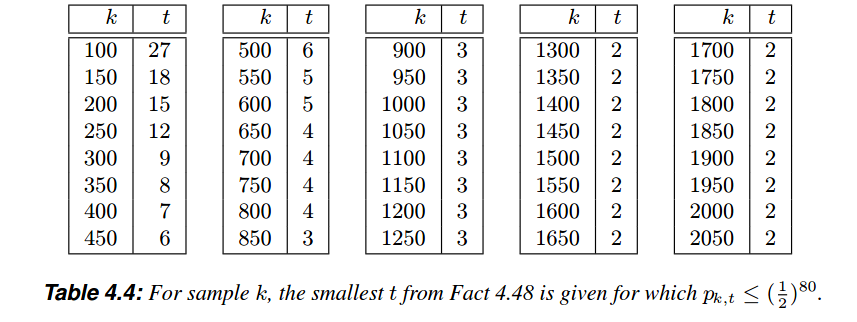Each iteration of Rabin-Miller reduces the odds that the number is composite by a factor of 1/4.
So after 64 iterations, there is only 1 chance in 2^128 that the number is composite.
Assuming you are using these for a public key algorithm (e.g. RSA), and assuming you are combining that with a symmetric algorithm using (say) 128-bit keys, an adversary can guess your key with that probability.
The bottom line is to choose the number of iterations to put that probability within the ballpark of the other sizes you are choosing for your algorithm.
[update, to elaborate]
The answer depends entirely on what algorithms you are going to use the numbers for, and what the best known attacks are against those algorithms.
For example, according to Wikipedia:
As of 2003 RSA Security claims that 1024-bit RSA keys are equivalent in strength to 80-bit symmetric keys, 2048-bit RSA keys to 112-bit symmetric keys and 3072-bit RSA keys to 128-bit symmetric keys.
So, if you are planning to use these primes to generate (say) a 1024-bit RSA key, then there is no reason to run more than 40 iterations or so of Rabin-Miller. Why? Because by the time you hit a failure, an attacker could crack one of your keys anyway.
Of course, there is no reason not to perform more iterations, time permitting. There just isn't much point to doing so.
On the other hand, if you are generating 2048-bit RSA keys, then 56 (or so) iterations of Rabin-Miller is more appropriate.
Cryptography is typically built as a composition of primitives, like prime generation, RSA, SHA-2, and AES. If you want to make one of those primitives 2^900 times stronger than the others, you can, but it is a little like putting a 10-foot-steel vault door on a log cabin.
There is no fixed answer to your question. It depends on the strength of the other pieces going into your cryptographic system.
All that said, 2^-128 is a ludicrously tiny probability, so I would probably just use 64 iterations :-).


